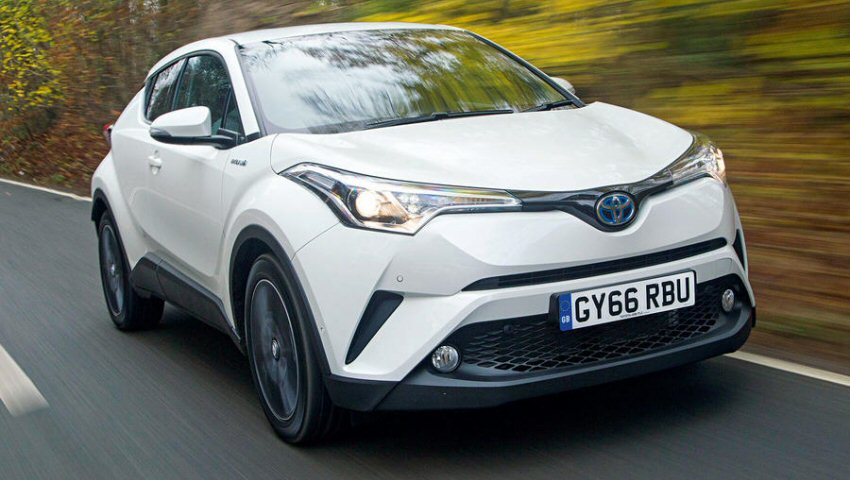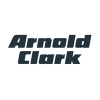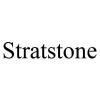
Toyota C-HR 2017 review
Toyota has a long history of the SUV market, longer in fact than the Nissan Qashqai.
Some would argue that Toyota was first to the market with its Toyota Rav 4, which is now a much larger, heftier family SUV, so it needed something to replace that to rival cars such as the Nissan Qashqai, Peugeot 3008 and the Seat Ateca. So now we have the C-HR, itís slick to look at, thereís a hybrid version that will keep your tax bills low and even the most basic of versions come with plenty of equipment. On paper then the C-HR should give the Ateca a run for its money.
So whatís it like on the road? Refreshingly for a small SUV there are only two engines to choose from. First up thereís the 1.2L petrol which has just enough power and doesnít scream too much when you push it hard. Itís a shame though the fuel economy and CO2 emissions arenít a little bit more impressive. Then thereís the 1.8L petrol hybrid which is in fact the same set up as when you get in the Toyota Prius. Itís noisier than the 1.2 however it would be the favourite amongst company car drivers due to its low CO2 emissions. Those doing high mileage will be disappointed that there is no diesel.
Ride comfort and handling also depend on which engine you choose. Go for the 1.2 petrol and the C-HR is relatively smooth and rides better on broken tarmac than the Ateca or the Peugeot 3008. Itís also surprisingly agile by SUV standards and delivers enough feedback through the steering wheel to give you confidence.
Go for the hybrid though and things start to go a little unsettled on patchy road surfaces. It feels heavier and less agile on twisty roads. Even compared with other SUVs you do sit rather low in the C-HR which makes it quite difficult to see out of when compared to say a Nissan Qashqai, especially the rear due to the funky styling. However all models get a rear camera as standard and higher end versions get front and rear parking sensors plus a system that even parks itself. Thereís plenty of adjustment in the seat and steering wheel so you can find a comfortable driving position, although basic versions donít get lumber support. All the dashboard controls are logically laid out and are within easy reach although we would prefer to adjust the temperature with dials instead of buttons.
It comes with a 7inch touchscreen which has all the functions you would expect including DAB radio and Bluetooth. And if you go for Excel or Dynamic that also includes sat nav. Itís also connected to the internet which is a very clever function because it allows you to get live updates for your route. Using it though is another story. It is very clunky and youíd be better off with a more simple system instead as in the Ateca. Pairing your mobile phone is relatively easy to do as is entering a destination in the sat nav.
Thereís plenty of space in the front of the C-HR even for taller drivers, however the door pockets are rather small so they only carry a small bottle of water and itís a similar story for the glove box. Things donít get any better in the rear either because although itís got the same footprint as the Seat Ateca space in the rear is much less. Kids and teenagers shouldnít moan too much however the windows are high up and quite small so it can feel pretty dark inside. If youíd like to sit three people side by side itís a bit more of a squeeze than other cars in this class.
Boot space is also a little small when compared to its rivals. It does have a wide opening but it tapers towards the rear which makes loading bulky items quite challenging which is made worse by the high boot lid which you canít get rid of because there is no adjustable floor. You can however fold the rear seats down to create more space but you are then left with a hefty step Ė another irritating feature.
The C-HR comes from one of the most reliable car brands however itís more expensive to buy than its rivals and the entry level 1.2L petrol is not as efficient as the basic versions of the Ateca for example. It also wonít hold on to its residual values very well either. The hybrid C-HR makes much more financial sense. It will cost you less in company car tax than many diesel rivals and the heady fuel consumption figure at 75mpg is certainly very appealing. Although in our experience, in real world tests itís much more likely to be around 50mpg.
Entry level icon versions of the C-HR are your best bet and they come with everything you are likely to want including duel zone climate control, 17 inch alloy wheels, automatic lights and wipers and adaptive cruise control. The other two trims names Excel and Dynamic add extra features but get pretty pricey. It really is a mixed bag. While itís decent to drive and generously equipped the fact it isnít cheaper to buy and offers comparatively less cabin space just stops it from troubling those class leaders.













